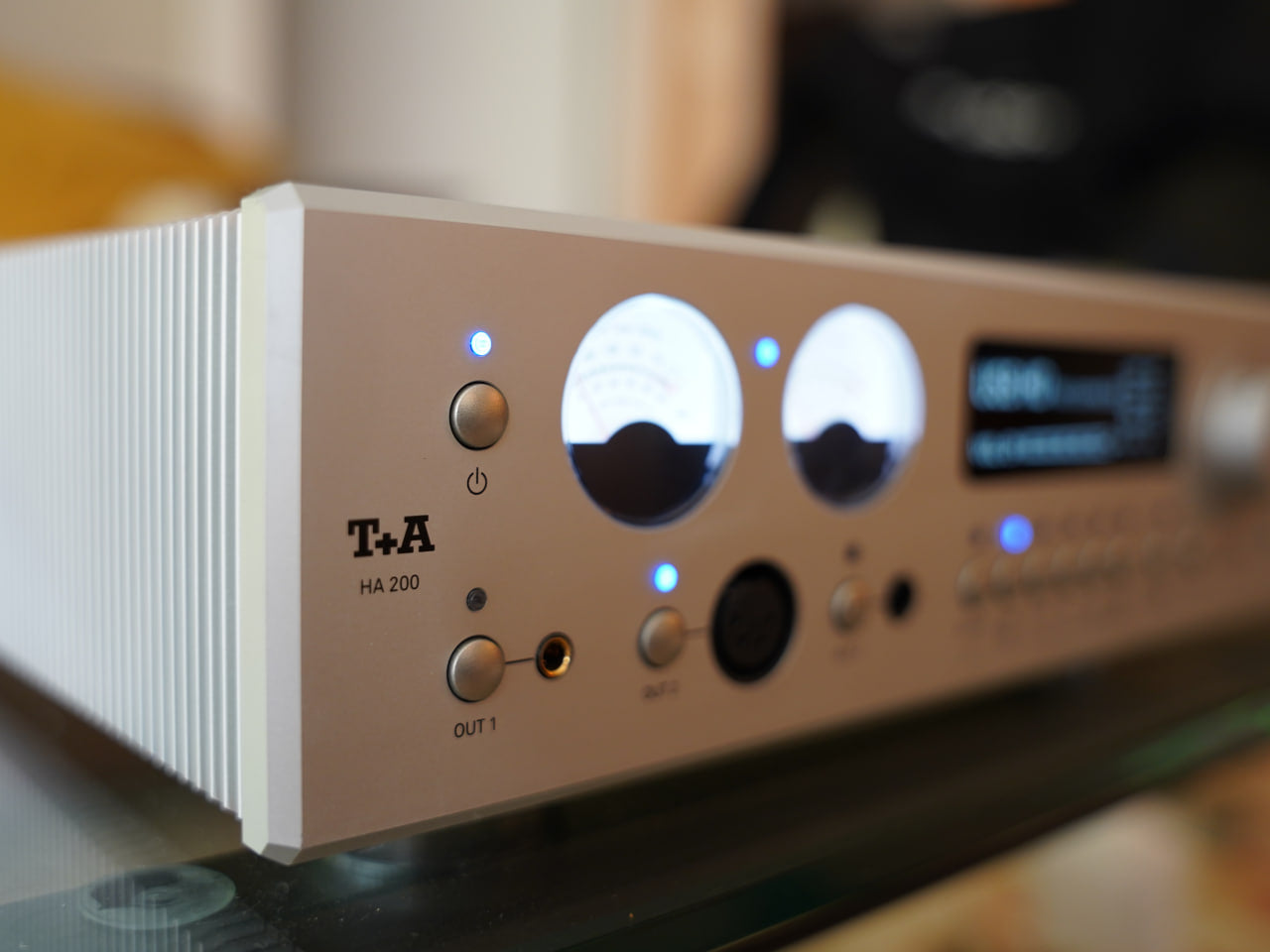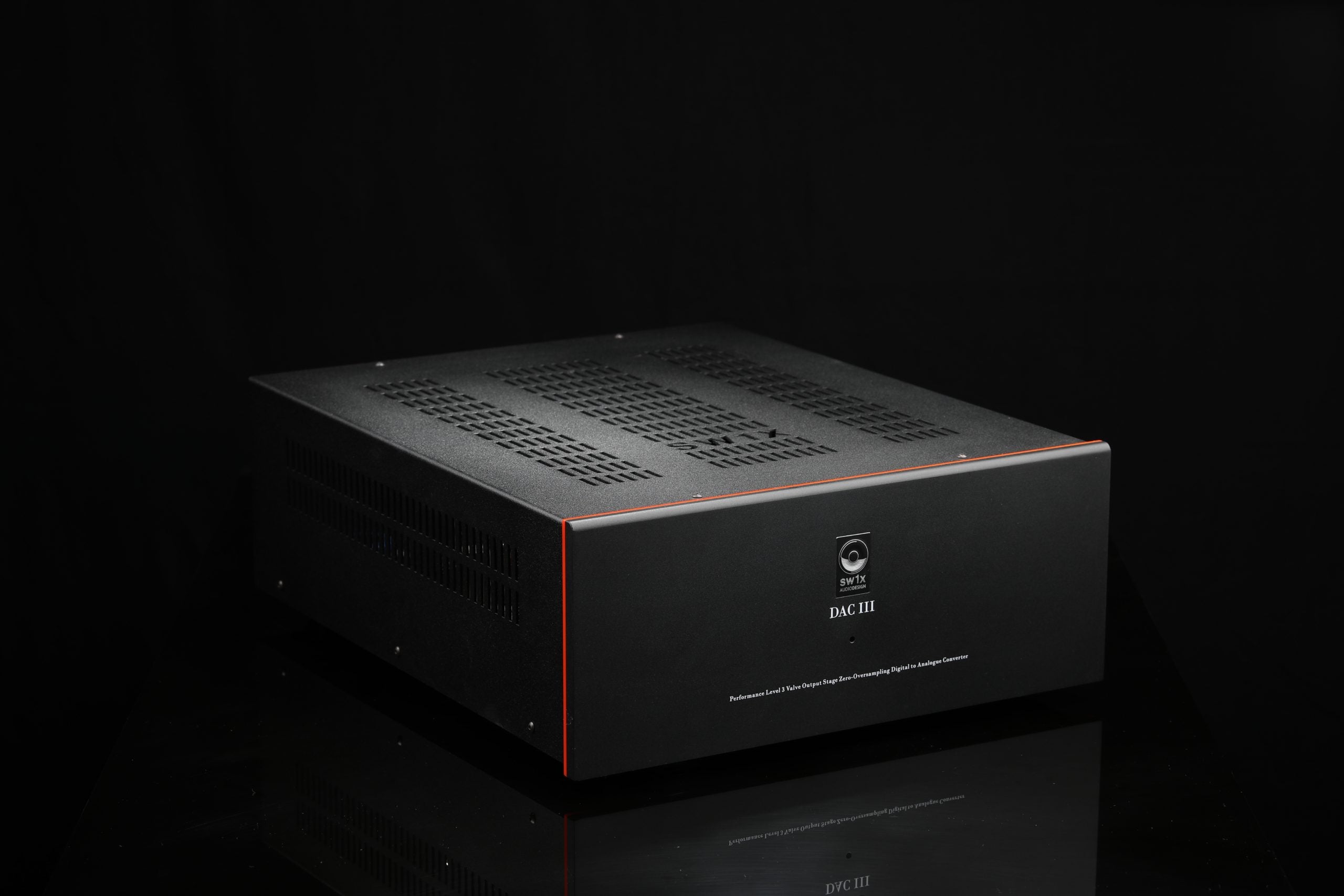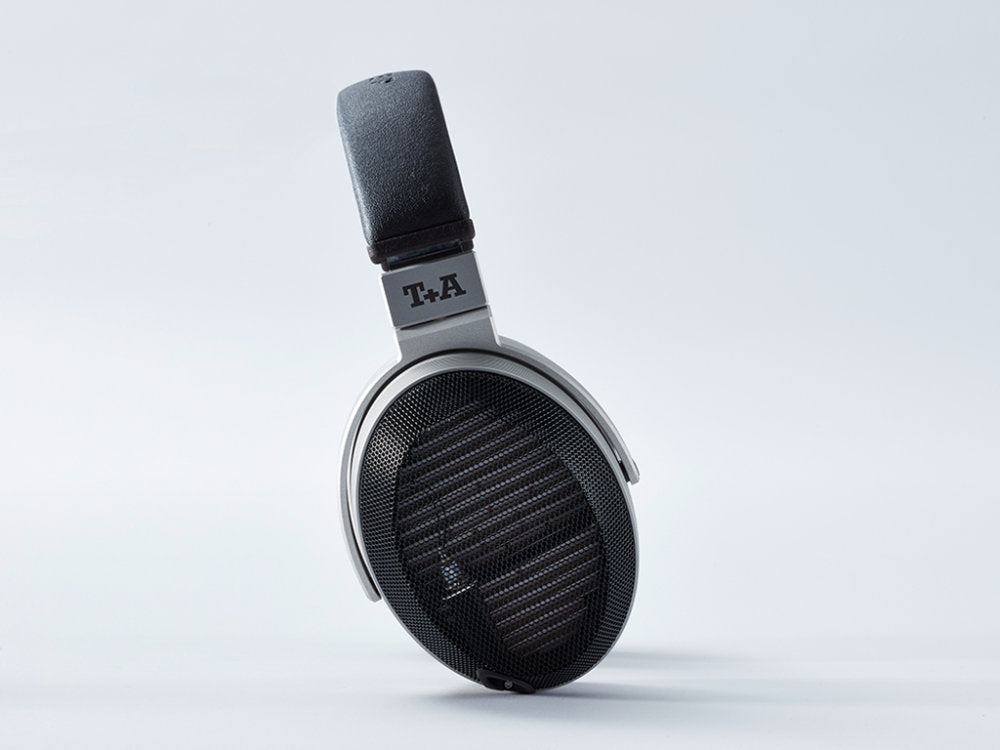T+A HA200 Review
The HA200 is pretty unique and exciting for a few reasons. Firstly, it’s a truly high end all in one. Which have been pretty few and far between. Secondly, its surprising to see companies shifting focus from 2 Ch to headphones the way T+A has done by releasing both the HA200 and Solitaire P.
All in ones have been relatively popular in the low to mid-tier market for their size and ease of use. It eliminates the need for complicated cable setups and usually fit quite nicely on a desk. However, once people pass a certain threshold most contend that separating gear is the only way to reach true peak performance. While I too am usually a fan of separating when possible, the HA200 has made itself quite at home on my desk.
On the outside, the HA200 is gorgeously designed. They’ve gone for a modern take on an old classic look. The VU meters juxtapose the vivid screen to their right. Everything about this unit just looks luxury. The buttons feel well machined with a good tactile feedback and the volume control is satisfying to use. While the look of a unit doesn’t take precedence over the sound, T+A have certainly outdone themselves.

Starting with the front panel, the screen mentioned previously displays all relevant information in a legible way. Volume control and input source take center stage as the larger block of text, and the filters and other unique features are a bit smaller and to the side. However, they are still easy to see. Below the screen are push buttons for each of the inputs. Some of which can be pressed twice to access the plethora of inputs available on the HA200. The tone control button allows for easy access of turning the tone adjustments on or off, while the actual tone controls are set using the menu button.
So, I want to talk about some of the settings first before we get into sound. The HA200 menu is incredibly feature rich allowing you to dial in the sound to your liking. There is a balance adjustment, bass and treble control, cross feed, upsampling filters, low-pass filters, loudness control, and output impedance selection. I tried this out a couple of ways and found that I preferred the sound when using unsampled material (PGGB is my choice, but you can use HQPlayer or any other upsampling software) and setting the filter to NOS 1. After playing around with the filters and reading through the manual this was my favorite. It provides non-Oversampling when using unsampled files but will use the programmed low-pass filter for regular material. It also has a couple other interesting settings including and impedance adjuster to best match different headphones but for the purpose of this review I left it at 8 ohm. The cross-feed feature is very mild and can help on some older recordings.

Moving on to the inputs available, I would be very surprised if you weren’t able to find one to fit your needs. This is the most inputs I have seen available on a device other than maybe an AVR. Starting from the top left, there are two coaxial SPDIFs, two optical Toslinks, one balanced AES/EBU and one BNC. Below are two analog inputs – balanced (XLR) and unbalanced (RCA). In the center is a Bluetooth antenna socket and two USB. One is for audio input, and one is for system maintenance. Next is a total of 4 ethernet inputs. The interesting thing is that none of them are audio input, but instead allow for direct connection with other T+A devices. Despite not being used for direct connection, this can be used for connection with their streamers. The last and most interesting choice of connections is the HDMI module. This allows for direct connection with a DVD, Blu-Ray player, or television. They also included an HDMI arc which would allow for output to a TV and be able to listen and control volume from the HA200.
Taking the well thought out design of the exterior, the interior looks equally well thought out. There are four PCM1795 DAC chips in the digital-to-analog converter section that are responsible for processing of the PCM signal. The DSD signal is handled by the T+A’s proprietary solution called True 1-bit converter. A large part of the interior is occupied by a power supply section with a distinctive pair of twin toroidal transformers (50VA each). The Class A output stage features MOSFET transistors. The volume control is based on precise resistors, and the circuit features Japanese relays with gold-plated contacts.
Sound
For the purpose of this review I used T+A’s own Solitaire P, which will have its own review, Audeze LCD-5, and Ambient Acoustic MAD 24.
I started my listening with the Audeze LCD-5. These have been my personal reference for a while so I am quite familiar with how they sound. Shuffling through my usual repertoire it didn’t take long so notice this All-in-one as a true contender.
Listening to “Fall Out of Love” by Gin Wigmore, her voice is incredibly staggering. It hangs for a second and then a second more. Some devices don’t render her powerful vocals with enough detail and weight that are truly necessary to get the full experience, but the HA200 shows itself to be more than capable. Theres so much textural information and detail that it just does so well. On top just being very smooth and musical makes the song quite impressive.
Switching paces a bit I put on “Painted Paradise” by Jiro Inagaki & Soul Media. The bass and drums on this song extend quite low. The HA200 has full control over the drivers and shows itself to have great slam but also good timbre and dynamics in the low end. On the opposite end is Jiro’s sax solos that interject. On some amp/DACs, it can be a bit harsh at parts, but none of that was an issue on the HA200.
What I was presented with was such a refined sound on the LCD-5, which to me can be picky headphones. The HA200 complimented their beautiful smoothness well, and I don’t say that like sounding smoothed over. More rather the music goes down smooth like honey. The timbre is excellent and overall, its an incredibly resolving combo.
Moving on to the MAD24, I wanted to test this amp at the extremes with IEMs as I occasionally will use them at the desk. The first thing that struck me was absolutely no hiss at all, and these are quite sensitive IEMs. I have had some hiss from them even on portable gear. They were interesting to try on the HA200 as it showed just how resolving it can be. The MAD24 are incredibly detailed and have wide soundstage which complemented the HA200 quite nicely.
Listening to the incredible “Rock Joint Biwa” by Hiromasa Suzuki was an incredible experience. The HA200 showed how precise it truly could be. The layering and separation of instruments made it easy to pin point everything even during the more complex sections. Theres so much going on in this song that some gear just gets lost but was no problem for the HA200. The overall presentation was very dynamic and clean but still pleasant. The HA200 does a great job of showing you every detail but not shoving it down your throat.
Finally when moving to T+A’s own Solitaire P, I was presented with tight gripping low end, natural timbre, and amazing detail and texture. The Solitaire P really open up on this amp and have a great airy presentation.
Listening to “Strange Fruit” by Dominique Fils-Aime was astounding. Her layered have such natural timbre and such great weight. They are presented so effortlessly on this combo. She’s well focused in the center with great depth of stage.
On “Unusual” by Marian Hill, there’s a lot of low end and sub bass information that really gets felt more than some other pairings I’ve heard. The low end is so well controlled and has great textural information. Her voice comes off incredibly natural and once again the stage is quite wide but capable of great depth and layering.
Summary
The HA200 is truly a world class desktop solution. From the fit and finish to the all-important sound, you would be hard pressed to find a better headphone setup that neatly fits on a desk. Of course the conversation is there as to whether you could get a better result for the same money by separating or swapping certain parts in the chain. However, after hearing it its hard to imagine you aren’t getting your money’s worth or would do better purchasing separates. I think there is something to be said about synergy as well. Sometimes you can buy separates that sound amazing but when they come together it’s not ideal. That isn’t the case here. They have made sure the DAC and Amp are in perfect synergy and I am left not wanting anything else from them. The DAC inside is good enough to be a stand alone driving any more than capable speaker amp. Similarly, the amp section is fantastic and more than capable of driving most planar and dynamic headphones on the market. Overall, I think the HA200 brings out the best in the headphones I was able to try on it. Its incredibly resolving, dynamic, open, and has very solid low end. You can pick out each and every detail in a recording and have it presented in a natural and pleasing way. The HA200 is an absolutely fantastic device and would be at home on the desk of anyone looking for true reference performance without all the hassle of picking and pairing separates.




Leave a comment
All comments are moderated before being published.
This site is protected by hCaptcha and the hCaptcha Privacy Policy and Terms of Service apply.